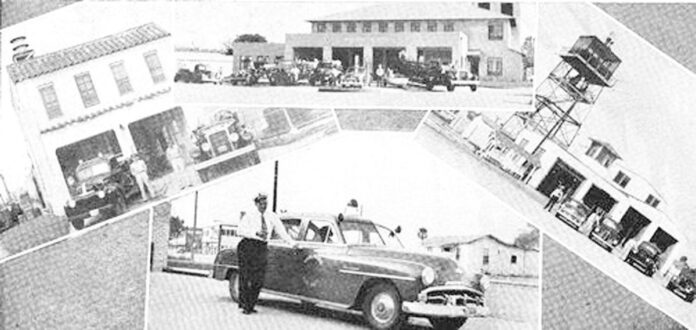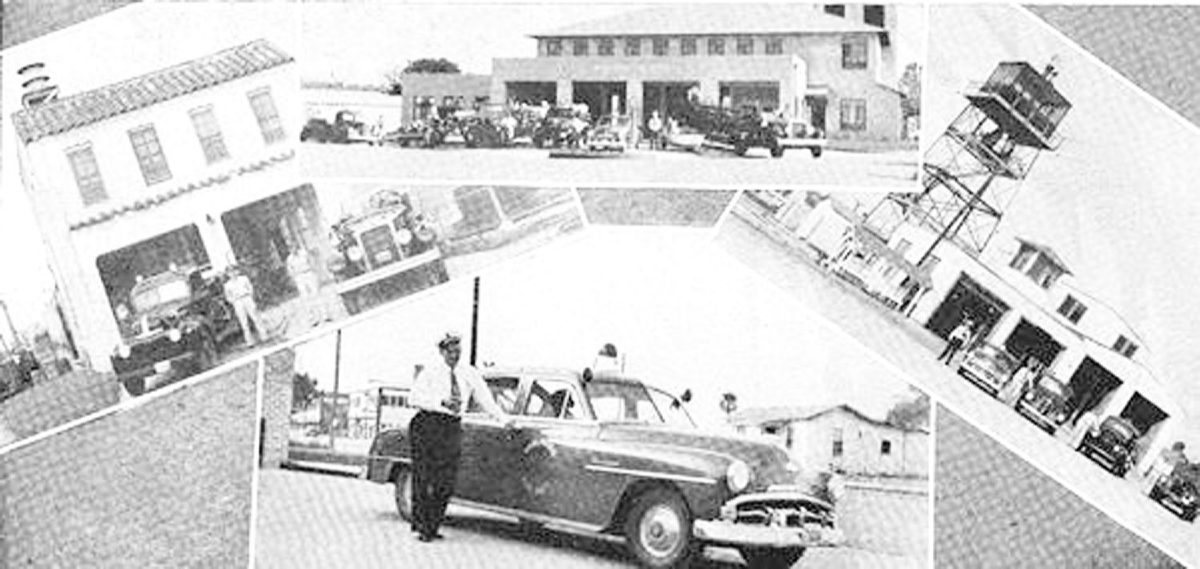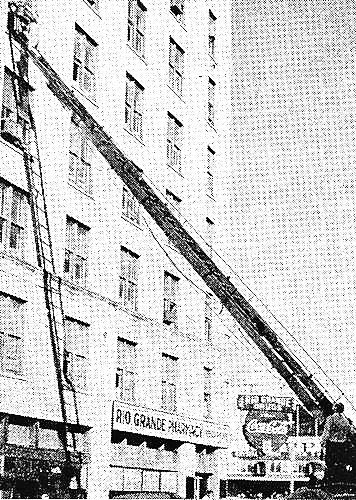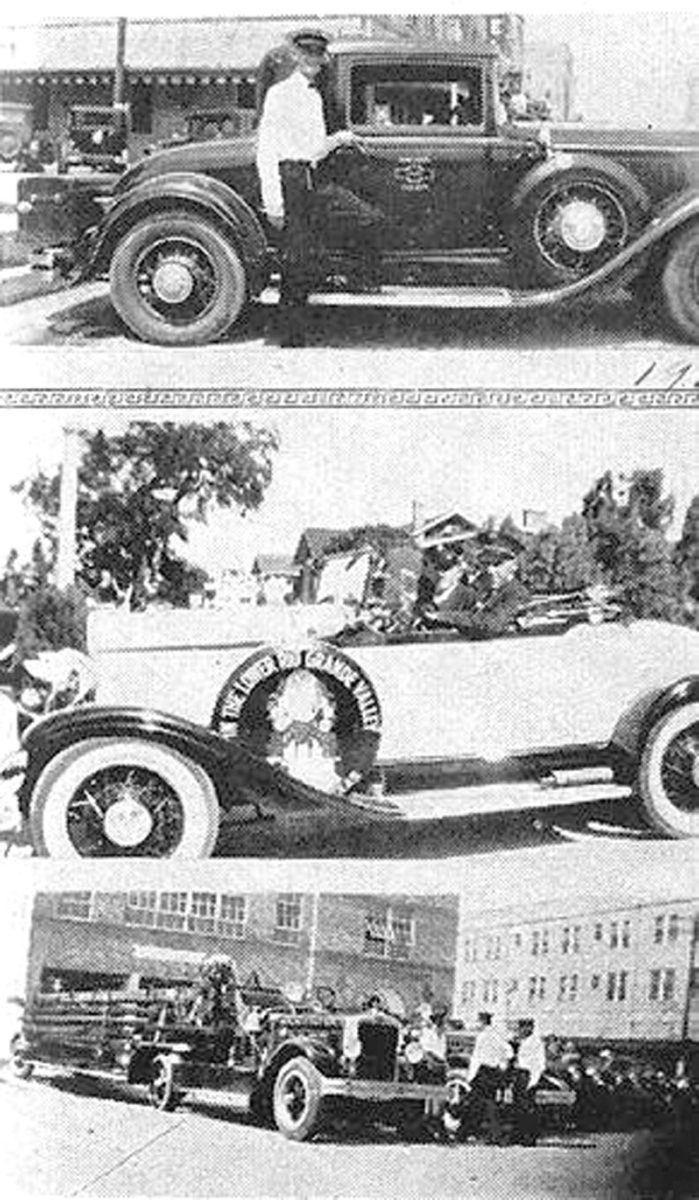BY NORMAN ROZEFF
In the 1950s, or perhaps earlier, there was a publication called The Texas Fireman. It at one point L. M. “Tex” Edmunds, who was associated with this publication compiled a History of the Harlingen Volunteer Fire Department.
Thanks to this document we can find detailed information on the early days of our fire department. The following is information derived from that document and newspaper accounts over the decades.
The history begins with a Dr. Cole, who apparently lived in Harlingen between the years 1906 and 1910. It was he together with Judge A. W. Cunningham who made the citizens of the recently-born town “fire control conscious.” It was a unique turn of events that were the promoting factors. It was New Year’s Eve 1/1/10 that Dr. Cole’s house burned to the ground. A train crew saw the blaze and attempted to awaken the town by blowing a locomotive’s steam whistle and firing off pistols. This met with no success as people thought that the noise was simply part of the evening’s celebrations.
Additional fires over time later stirred Cunningham to organize a “Bucket Brigade” of Volunteers to turn out to fight fires. One, in fact, was too close for comfit. Cunningham had a onestory three room office at the northeast corner of Van Buren and First Streets. In early 1910 a fire had broken out in the triangle block opposite his office. It threatened to wipe out several buildings and clearly demonstrated the need to initiate a firefighting organization.
The Judge, who had become Mayor, called a meeting of businessmen and other citizens and organized a “bucket brigade” of volunteers who would turn out in the event of a fire and lead others in fighting the fire. In fighting fires one line of volunteers passed the filled water buckets while a second line returned the empty ones.
The system was designed not so much to extinguish a blazing structure fire but to keep it from spreading to adjacent buildings.
When fires broke out, volunteers were alerted to the fact by an alarm consisting of pistol, shotgun, or rifle firing. The fires were then fought with water from shallow wells and rain water barrels or cisterns.
As noted adjoining structures were also watered down. Eventually a deal was made with city founder Lon C. Hill to supply the city with water from what is now City Lake. At that time it was more or less a wallow in a natural depression, a low place called, in Spanish a “chasco.” It was also called by locals “Laguna Las Vacas” because the cows of the village often wandered into it only to become mired in its mud. The charge was five cents per 1000 gallons.
Late in 1910 the City Commission wanted to incorporate the city under a Texas law regulating cities of more than 1,000 population. It authorized Marion M. Osborn, publisher of the Weekly Star, and James H. Ewing to make a community census. They did with the result that 1,126 persons were counted.
A petition for a commission form of government was signed by, among others, Hugo Letzerich, M.M. Osborn, Sam Botts, Santos Lozano, and James Lockhart.
Seventy two qualified votes are cast, eight of which are by Hispanics. The Commission at the time rented the Harlingen Commercial Club building for its meetings.
By the end of the year 1911 the town had constructed a 12,000 gallon tank atop a 50 foot tower on what is now a parking lot on First Street across from the El Taquito Cafe.
This tank was fed from a settling basin approximately 100 foot in diameter. It was filled from the lake by gravity flow in wooden pipes bound by wire. A water system was buried and hydrants installed up Harrison to 4th Street and along Commerce.
Early in 1912 a five-foot diameter hose reel on two wheels was purchased at a cost of $170. Later a second reel was purchased, giving the town 1500’ of 2 ½ inch hose. These were used until 1921. The ten members comprising the Volunteer fire fighting force were Otto Weller, Homer Morrow (lumber yard owner and son-in-law of Lon Hill), H.D. Seago (later County Clerk), Fred Chambers, Sam Botts (later to be elected mayor), A.L.
Brooks (later owner of a Sears store), Sam Sanders (the tailor), Al Pendleton, the builder Andrew Goldammer, and Osco Morris (later City Marshall), who acted as nominal head and was responsible for the equipment upkeep.
Usually the first volunteer to arrive at the scene of a fire served as “chief” in fighting the blaze.
On August 2, 1916 P. S.
Waterwall is appointed to be assistant fire marshal.
Three years later in 1919 a significant city ordinance to ban the construction of wooden buildings in the downtown section passes, and the council moves to eliminate existing fire hazard structures.
In this year the Harlingen Light and Water Plant while municipal owned was leased to private management. The plant was at the corner of Madison and Winchell (B) Streets. It was fed by a 10” wooden pipe from Lake Harlingen. From there two 500 gallons per minutes pumps would supply the town via a 50,000 gallon tank with an elevation of 120” at its bottom. The tower was at the site of the plant that also had a small 14’ deep concrete reservoir. Built in 1912 this station supplied 16 miles of 4”, 6”, 8”, and 10” pipe laid in 1912 and 1913. Connected also were 10 double fire hydrants. At the time the average consumption was 40,000 gallons per day. The apparatus was stored at the pumping plant which had a fire alarm siren, whistles, and telephones.
While the streets were graded, they were not yet paved.
Following World War I the city reexamined the fire fighting system and determined that a Fire Chief was needed to oversee what was now a larger force as 16 men now comprised the department. Bert Gamble was elected chief by the volunteers. Gamble had fire-fighting experience to lead and train the group which grew to 24 by 1922.
No slouches in getting the community involved the group put on barbecues to raise funds to purchase modern equipment. Eventually they had enough money to put make a $1599 down payment to purchase a Type 40, 350 gpm American La France pumper. This equipment was delivered on March 6, 1922. Floyd Smith, who had been elected assistant chief, was the driver and operator of this piece of equipment. Others who were in the crew were O.H. Joyner (the Texas Co. Oil rep.) and who would also be elected as an assistant chief; Floyd Allen, a salesman with Robert’s Jewelry; Ruben M. Eubank (oil company agent); William Hickman Hill (a son of Lon C.); Claude Liston (lumberman clerk); Neal Meadley (grocer); Charles Max Bobo; Finley Ewing (hardware merchant, later Harlingen mayor); Harvey Oler (insuranceman); Roland Rader (farm laborer); Paul Rader (hardware salesman); W.O Liston; D.
Ross Anglin (traveling camp foreman); Hoyt. H.
Burchard (druggest); Clyde Feisbein; Horace Johnson; Joseph R. Roberts (banker, later two time mayor); Houston Lockhart (truck driver); Barney. A.
Chaudoin (government clerk); Lehman Nelson (grocery salesman); and Benjamin Sidney “Sid” Murray (real estate agent).
The first use of the new pumper is a run to extinguish a fire at the home of a Latino family on North C Street. This is followed by a run to San Benito’s business district by the volunteers, for in 1923 a mutual aid agreement is signed for adjacent cities to render aid in case of a major fire.
The third use of the pumper is a blaze at the Harlingen Canal Pumping Station and the fourth a call by the Mercedes Fire Department. With water flooding parts of the highway near Mercedes, the pumper had proceed over a half mile of railroad ties. There were challenges in going to the canal pumping station too as weak bridges collapsed after the pumper had crossed them. This resulted in diverting the return home through San Benito.
4/21 E.C. Bennett arrives. He will become Manager of the Water and Light District operated by the city and later lead the City Fire Department as city manager of utilities Born in Farmersburg, IN 9/29/1890, he attended public schools. Married to Jennie Reed on 5/18/11, this First Methodist member was also a Mason and Shriner. He authorizes the street name changes for the south-north cross streets but these are not implemented until 1926.
Those east of the intersection of Harrison and Commerce get numbers and those west, letters. The cross streets west are given consecutive alphabet letters starting with A at Commerce and to the east, consecutive numbers. Street names which were lost, starting with Mexico Street becoming F Street, and moving east were: Matamoras, Hidalgo, Winchell, Bell, Hill, Fordyce (later 1st Street and also called in part New Combes Road), Brooking (sic), Van Arsdale, Beggs, Vanderbilt, Bennett, Whitaker (7th Street), Grace (8th), Bryan (9th), and Regan (10th).
The south part of part of 9th was also named Harper for a time and south 10th Marie. As the city expanded west, Perry (Eye) and Cook (G) were added. The correct numbering of houses is also accomplished. These changes occur in late 1925 or early 1926.








